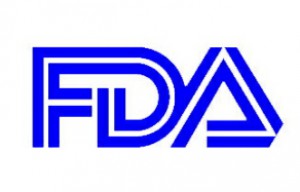A new study conducted at Purdue University that has been published in the journal Clinical Pediatrics reports on the dye content of many processed foods. The Center for Science in the Public Interest (CSPI) states that the findings are “disturbing since the amounts of dyes found in even single servings of numerous foods – or combinations of several dyed foods – are higher than the levels demonstrated in some clinical trials to impair some children’s behavior.”
 Artificial colors are used in many beverages, foods, snack foods, and sweets in the U.S. The FDA limits the colors allowed in our foods to nine different types. Studies have shown that these chemicals can affect children’s behavior. The amount of food dyes that are certified has risen from 12 mg per person per day in 1950 to 62 mg per person per day in 2010. That’s a 500 % increase.
Artificial colors are used in many beverages, foods, snack foods, and sweets in the U.S. The FDA limits the colors allowed in our foods to nine different types. Studies have shown that these chemicals can affect children’s behavior. The amount of food dyes that are certified has risen from 12 mg per person per day in 1950 to 62 mg per person per day in 2010. That’s a 500 % increase.
For instance, General Mills’ Trix cereal has Yellow 6, Blue 1, and Red 40. Those must be listed on the ingredients list. But the amount, up until now, has been a secret. Trix cereal has 36.4 milligrams of those chemicals per serving. Fruity Cheerios has 31 mg of food dyes. The cereal with the most artificial dyes was Cap’n Crunch Oops! All Berries, with 41 mg. Kraft Macaroni and Cheese has 17.6 mg of dyes per serving, and Skittles Original candies has 33.3 mg per serving. The product with the highest level of dye was Kool-Aid Burst Cherry, with 52.4 mg per serving.
Some children can be affected by doses up to 35 mg. But the amount of dye that triggers reactions in the most sensitive children is unknown. Some children could easily consume 100 mg of dyes in one day; some could consume more than 200 mg per day.
CSPI executive director Michael F. Jacobson said in a statement, “until now, how much of these neurotoxic chemicals are used in specific foods was a well-kept secret. But now it is clear that many children are consuming far more dyes than the amounts shown to cause behavioral problems in some children. The cumulative impact of so much dyed foods in children’s diets, from breakfast, lunch, dinner, and snacks, is a partial reason why behavioral problems have become more common.”
In 2011, the FDA acknowledged that foods dyes and other chemicals cause behavioral problems in children, but CSPI says that the government has done nothing to protect children. Some corporations are responding to public pressure on this issue. Kraft removed dyes from child-oriented types of its Macaroni and Cheese. General Mills removed dyes from Trix and Yoplait Go-Gurt yogurts. Frito-Lay and Pepperidge Farm have also removed dyes from popular products such as Lay’s seasoned chips and Goldfish crackers.
The FDA has addressed this subject, but Dr. Linda Katz, Director of the Office of Cosmetics and colors in FDA’s Center for Food Safety and Applied Nutrition states, “color additives are very safe when used properly. There is no such thing as absolute safety of any substance.” If you do have a reaction to any color additive, you can report problems to the FDA Consumer Complaint Coordinator in your state.
Image courtesy FDA





Could all these added food colors contribute to causing autism in young kids? Once again the FDA comes up short.